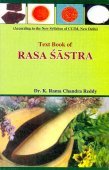Amlavarga, Amla-varga: 6 definitions
Introduction:
Amlavarga means something in Hinduism, Sanskrit. If you want to know the exact meaning, history, etymology or English translation of this term then check out the descriptions on this page. Add your comment or reference to a book if you want to contribute to this summary article.
Languages of India and abroad
Sanskrit dictionary
Source: DDSA: The practical Sanskrit-English dictionaryAmlavarga (अम्लवर्ग).—a class of sour things including plants with acid leaves and fruits.
Derivable forms: amlavargaḥ (अम्लवर्गः).
Amlavarga is a Sanskrit compound consisting of the terms amla and varga (वर्ग).
Source: Cologne Digital Sanskrit Dictionaries: Shabda-Sagara Sanskrit-English DictionaryAmlavarga (अम्लवर्ग).—m.
(-rgaḥ) A class of plants with acid leaves or fruits, as the lime, orange, pomegranate, tamarind, wood-apple, sorrel, Lakucha, Spondias and others. E. amla, and varga a class.
Source: Cologne Digital Sanskrit Dictionaries: Monier-Williams Sanskrit-English DictionaryAmlavarga (अम्लवर्ग):—[=amla-varga] [from amla] m. a class of plants with acid leaves or fruits (as the lime, orange, pomegranate, tamarind, sorrel, and others), [Suśruta]
Source: Cologne Digital Sanskrit Dictionaries: Yates Sanskrit-English DictionaryAmlavarga (अम्लवर्ग):—[amla-varga] (rgaḥ) 1. m. Trees with acid fruit or leaves, as lime, &c.
[Sanskrit to German]
Sanskrit, also spelled संस्कृतम् (saṃskṛtam), is an ancient language of India commonly seen as the grandmother of the Indo-European language family (even English!). Closely allied with Prakrit and Pali, Sanskrit is more exhaustive in both grammar and terms and has the most extensive collection of literature in the world, greatly surpassing its sister-languages Greek and Latin.
See also (Relevant definitions)
Full-text: Amla.
Relevant text
Search found 6 books and stories containing Amlavarga, Amla-varga; (plurals include: Amlavargas, vargas). You can also click to the full overview containing English textual excerpts. Below are direct links for the most relevant articles:
Rasa Jala Nidhi, vol 2: Minerals (uparasa) (by Bhudeb Mookerjee)
Part 2 - Purification of Hingula (cinnabar) < [Chapter XXIII - Uparasa (23): Hingula (cinnabar)]
Part 2 - Purification of tuttha < [Chapter V - Uparasa (5-6): Tuttha and Sasyaka (copper sulphate)]
Part 2 - Purification of Makshika < [Chapter II - Uparasa (2): Makshika (pyrites)]
Rasa Jala Nidhi, vol 4: Iatrochemistry (by Bhudeb Mookerjee)
Part 20 - Treatment for indigestion (18): Shankheshvara rasa and Mahashankhashvara rasa < [Chapter IV - Irregularity of the digesting heat]
Part 21 - Treatment for indigestion (19): Mahashankha rasa < [Chapter IV - Irregularity of the digesting heat]
Rasa Jala Nidhi, vol 3: Metals, Gems and other substances (by Bhudeb Mookerjee)
Part 8 - Semi-poison (8): Jayapala (croton seeds) < [Chapter XXXI - Upavisha (semi-poisons)]
Sushruta Samhita, volume 1: Sutrasthana (by Kaviraj Kunja Lal Bhishagratna)
Sushruta Samhita, volume 4: Cikitsasthana (by Kaviraj Kunja Lal Bhishagratna)
Chapter VIII - The medical treatment of Fistula-in-ano
Rasa Jala Nidhi, vol 5: Treatment of various afflictions (by Bhudeb Mookerjee)
Related products

